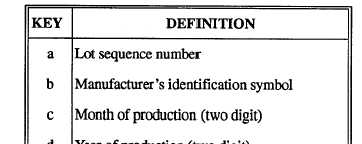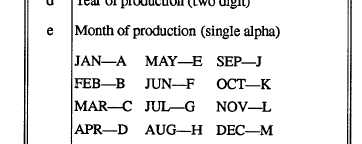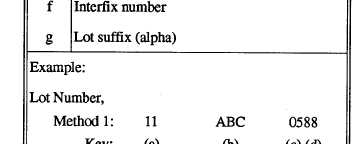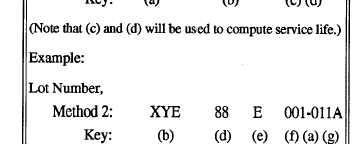contained in Navy Ammunition Logistics Codes,
NAVAIR 11-1-116B/TW010-AA-ORD-030.
Ammunition Lot Number
An ammunition lot is a quantity of ammunition
assembled from uniform components under similar
conditions. A lot is expected to function in a uniform
manner. Each ammunition lot (table 12-3) is assigned a
code number (ammunition lot number) that identifies all
ammunition items assembled as part of that lot. For
specific ammunition lot numbers, you should refer to
Identification of Ammunition, NAVSEA OP 2238/
NAVAIR 11-1-117.
Table 12-3.—Derivation of Lot Number
MAGAZINES
Explosives and ammunition are stowed in
magazines or areas designated for the specific materials.
NAVSEASYSCOM designs and designates all
magazines or storage areas. The type and amount of
material that may be stowed in any magazine depends
on the type of magazine in relation to the quantity-
distance requirements.
Types of Magazines
Magazines located at naval air stations and other
naval installations are of various sizes, types of
construction, and classes, depending upon the nature of
the material to be stowed. Magazines are designated as
high-explosive magazines, smokeless-powder
magazines, and ready-service magazines according to
their intended use. Magazines are further classified by
type of design—surface, subsurface, arch-type,
earth-covered, or barricaded.
Recently designed magazines used to store
smokeless powder, pyrotechnics, loaded projectiles,
fixed ammunition, small-arms ammunition, and other
fire or missile hazard materials are of two general
types-the rectangular, earth-covered magazine and the
concrete, triple-arch, earth-covered magazine.
1. The rectangular, earth-covered magazine (50
feet by 100 feet) is constructed of reinforced concrete
throughout.
2. The concrete, triple-arch, earth-covered
magazine has three arches. The combined arches make
up a single magazine; however, each arch is separated
by a minimum of 10 feet at the door, and the space is
filled with dirt. The standard floor size of each arch in
the triple-arch construction is 25 feet by 80 feet. Each
of the three arches maybe used for a different type of
compatible material.
Magazines constructed since 1928 that are used for
storing high-explosive, bomb-type ammunition, and
other explosive hazard materials are made of reinforced
concrete, single-arch, earth-covered type construction,
and they are barricaded at the entrance end. These
magazines have been constructed in three sizes:
1. The 25 feet by 50 feet and the 25 feet by 40 feet
sizes are suitable for the stowage of 250,000 pounds net
weight of explosives.
2. The 25 feet by 80 feet size is suitable for the
stowage of 500,000 pounds net weight of explosives.
12-4









